Abstract
In auditory localization experiments, where the subject observes from a fixed position, both relative sound intensity and arrival time at the two ears determine the extent of localization performance. The present experiment investigated the role of binaural cues in a different context, the sound-position discrimination task, where the subject is free to move and interact with the sound source. The role of binaural cues was investigated in rats by producing an interaural imbalance through unilateral removal of the middle auditory ossicle (incus) prior to discrimination training. Discrete trial go-right/go-left sound-position discrimination of unilaterally incudectomised rats was then compared with that of normal rats and of rats with the incus of both sides removed. While bilateral incus removal affected binaural intensity and arrival times, the symmetry of sound input between the two ears was preserved. Percentage of correct responses and videotaped observations of sound approach and exploration showed that the unilateral rats failed to localize the sounding speaker. Rats with symmetrical binaural input (normal and bilaterally incudectomised rats) accurately discriminated sound position for the duration of the experiment. Previously reported monaural localization based upon following the intensity gradient to the sound source was not observed in the unilaterally incudectomised rats of the present experiment. It is concluded that sound-position discrimination depends upon the use of binaural cues.
Full text
PDF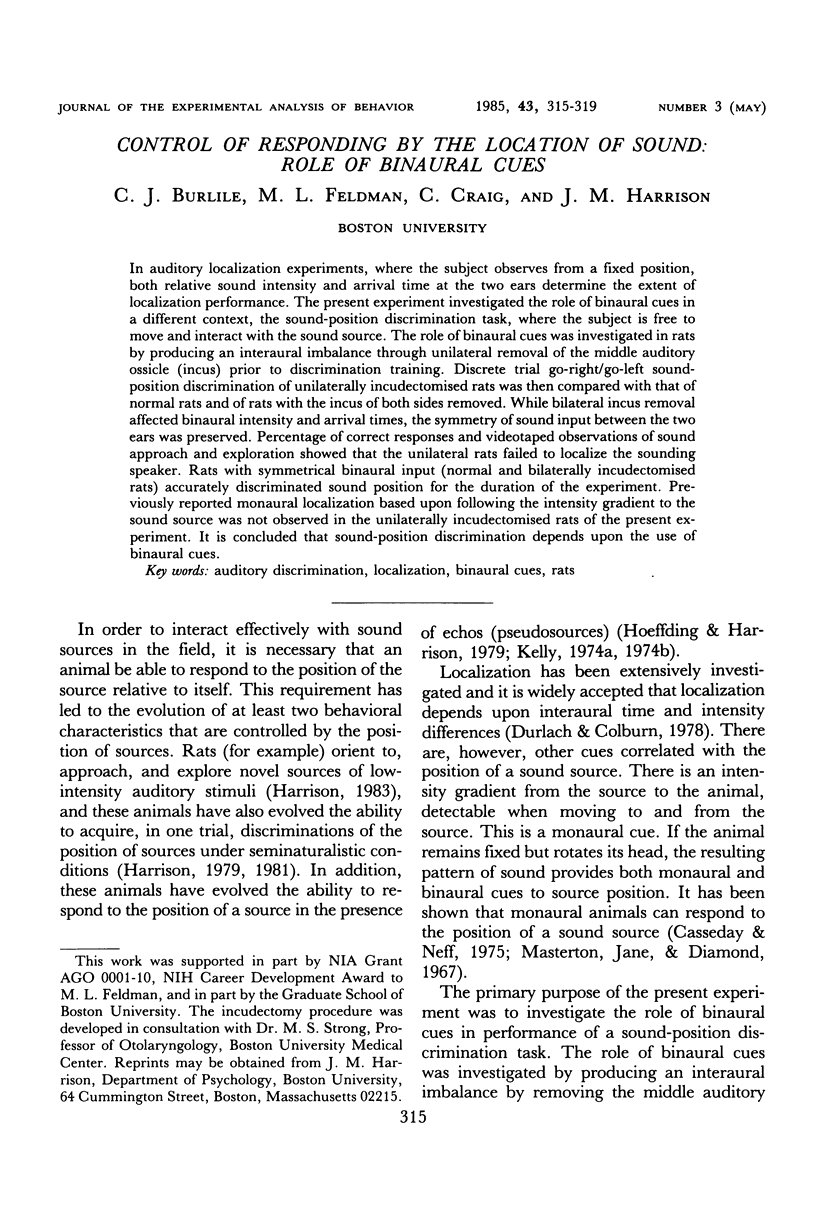
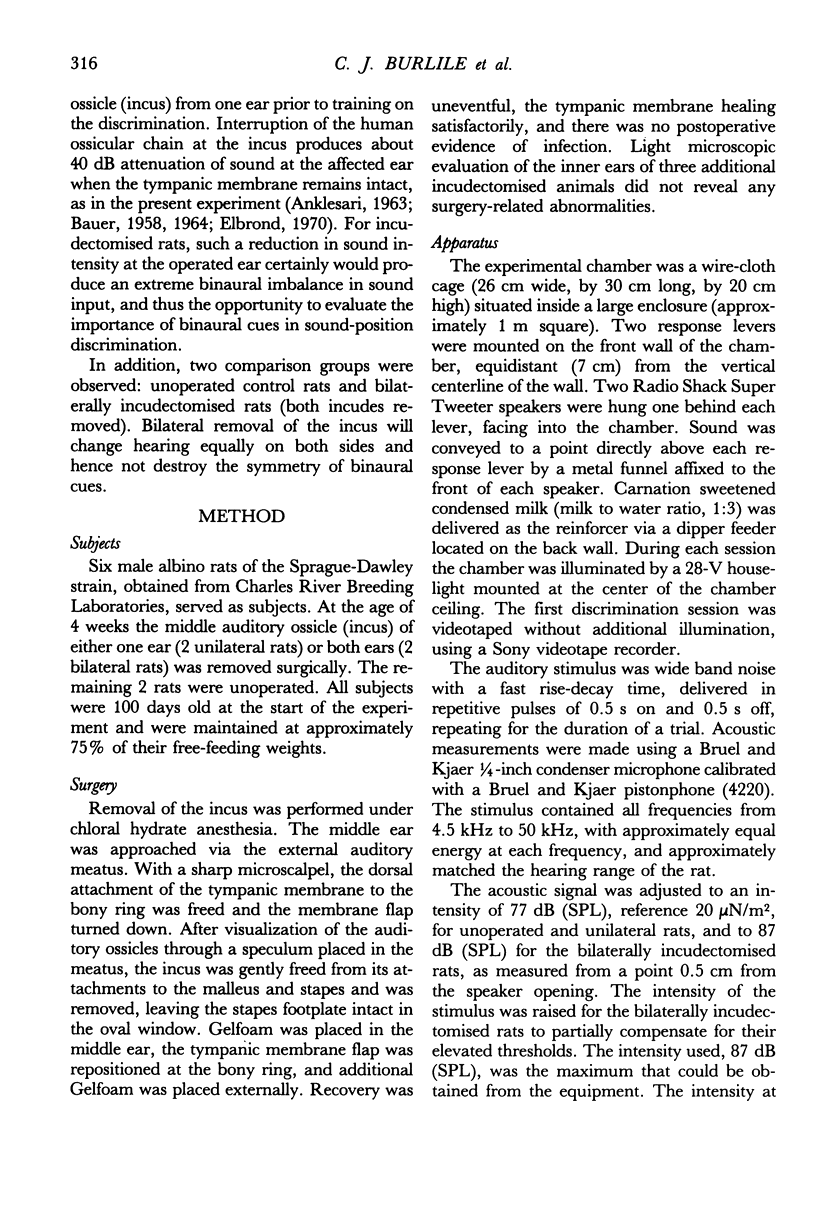
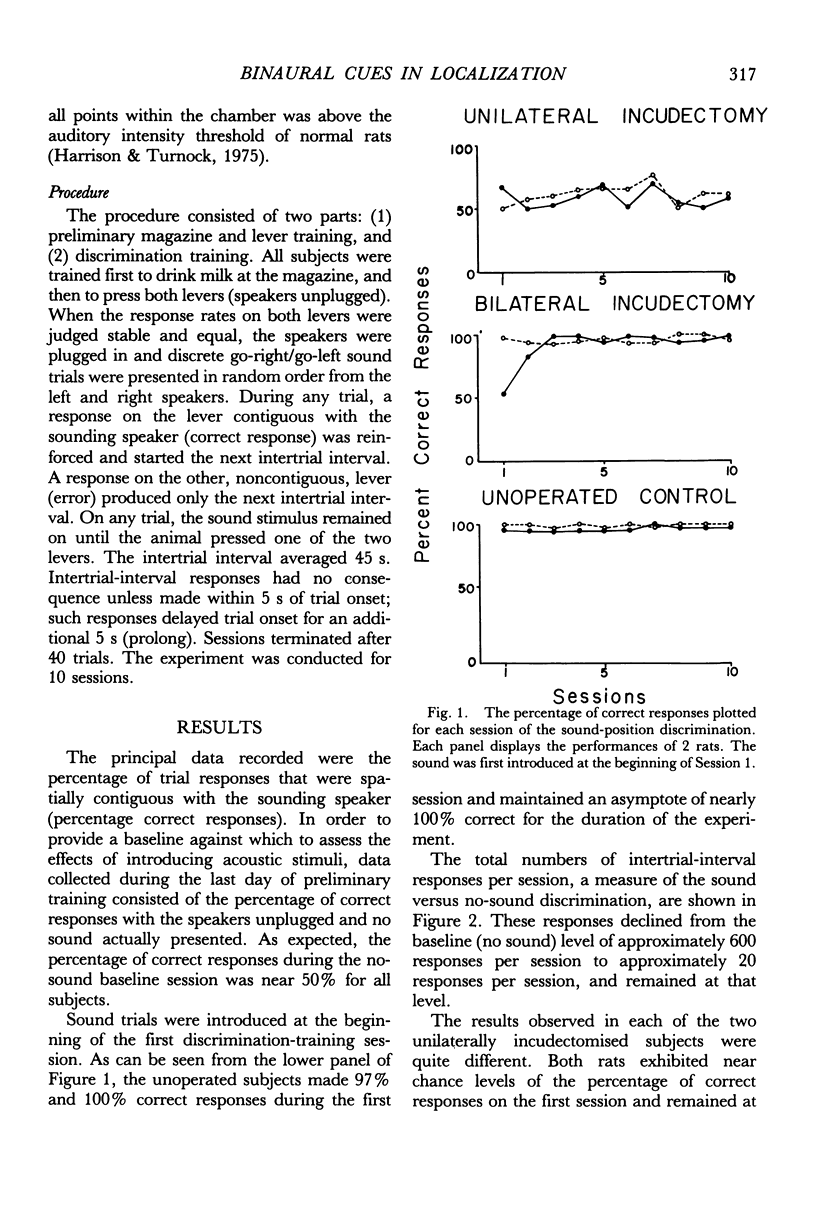
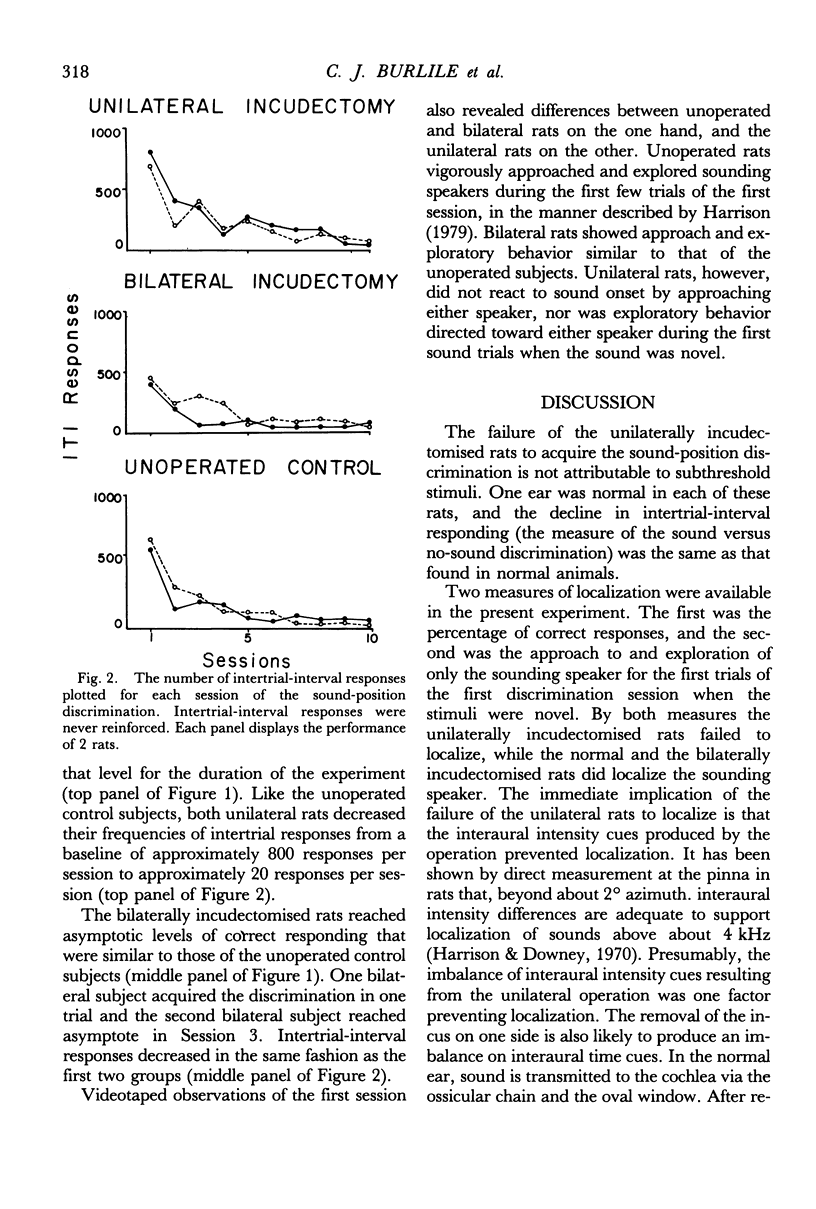
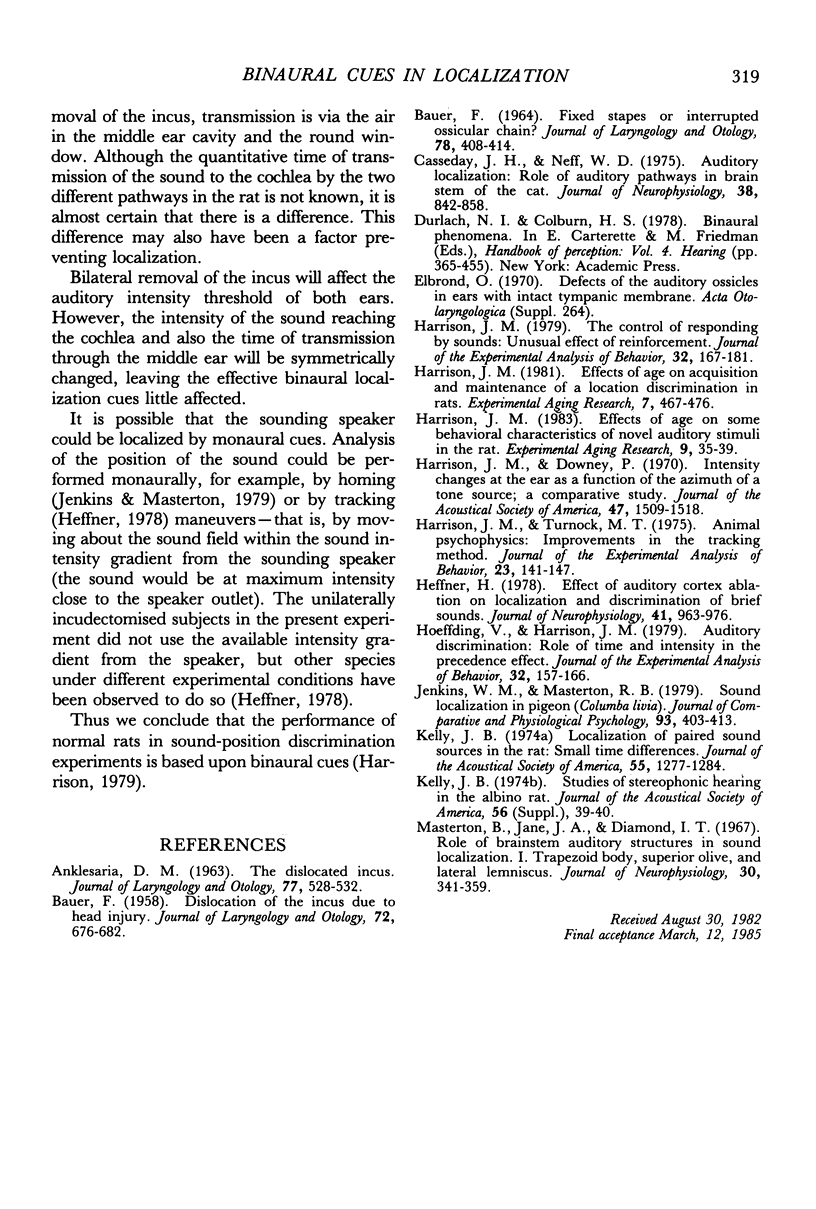
Selected References
These references are in PubMed. This may not be the complete list of references from this article.
- ANKLESARIA D. M. The dislocated incus. J Laryngol Otol. 1963 Jun;77:528–532. doi: 10.1017/s0022215100060965. [DOI] [PubMed] [Google Scholar]
- BAUER F. Dislocation of the incus due to head injury. J Laryngol Otol. 1958 Aug;72(8):676–682. doi: 10.1017/s0022215100054487. [DOI] [PubMed] [Google Scholar]
- BAUER F. FIXED STAPES OR INTERRUPTED OSSICULAR CHAIN? J Laryngol Otol. 1964 Apr;78:408–413. doi: 10.1017/s0022215100062216. [DOI] [PubMed] [Google Scholar]
- Casseday J. H., Neff W. D. Auditory localization: role of auditory pathways in brain stem of the cat. J Neurophysiol. 1975 Jul;38(4):842–858. doi: 10.1152/jn.1975.38.4.842. [DOI] [PubMed] [Google Scholar]
- Harrison J. M., Downey P. Intensity changes at the ear as a function of the azimuth of a tone source: a comparative study. J Acoust Soc Am. 1970 Jun;47(6):1509–1518. doi: 10.1121/1.1912082. [DOI] [PubMed] [Google Scholar]
- Harrison J. M. Effects of age on acquisition and maintenance of a location discrimination in rats. Exp Aging Res. 1981 Winter;7(4):467–476. doi: 10.1080/03610738108259825. [DOI] [PubMed] [Google Scholar]
- Harrison J. M. Effects of age on some behavioral characteristics of novel auditory stimuli in the rat. Exp Aging Res. 1983 Spring;9(1):35–39. doi: 10.1080/03610738308258418. [DOI] [PubMed] [Google Scholar]
- Harrison J. M. The control of responding by sounds: unusual effect of reinforcement. J Exp Anal Behav. 1979 Sep;32(2):167–181. doi: 10.1901/jeab.1979.32-167. [DOI] [PMC free article] [PubMed] [Google Scholar]
- Harrison J. M., Turnock M. T. Animal psychophysics: improvements in the tracking method. J Exp Anal Behav. 1975 Jan;23(1):141–147. doi: 10.1901/jeab.1975.23-141. [DOI] [PMC free article] [PubMed] [Google Scholar]
- Heffner H. Effect of auditory cortex ablation on localization and discrimination of brief sounds. J Neurophysiol. 1978 Jul;41(4):963–976. doi: 10.1152/jn.1978.41.4.963. [DOI] [PubMed] [Google Scholar]
- Hoeffding V., Harrison J. M. Auditory discrimination: role of time and intensity in the precedence effect. J Exp Anal Behav. 1979 Sep;32(2):157–166. doi: 10.1901/jeab.1979.32-157. [DOI] [PMC free article] [PubMed] [Google Scholar]
- Kelly J. B. Localization of paired sound sources in the rat: small time differences. J Acoust Soc Am. 1974 Jun;55(6):1277–1284. doi: 10.1121/1.1914697. [DOI] [PubMed] [Google Scholar]
- Masterton B., Jane J. A., Diamond I. T. Role of brainstem auditory structures in sound localization. I. Trapezoid body, superior olive, and lateral lemniscus. J Neurophysiol. 1967 Mar;30(2):341–359. doi: 10.1152/jn.1967.30.2.341. [DOI] [PubMed] [Google Scholar]


